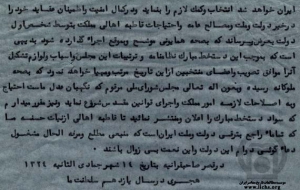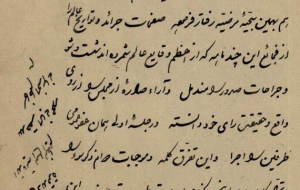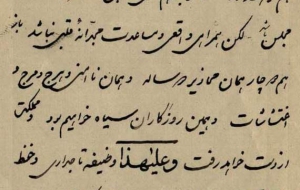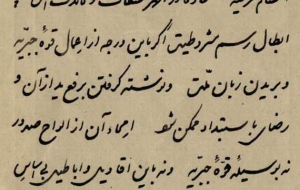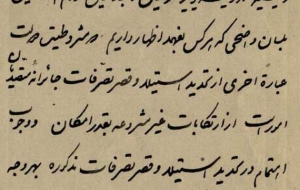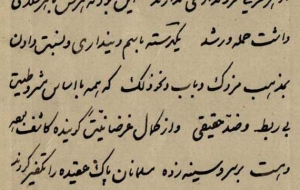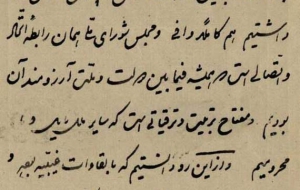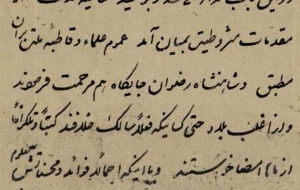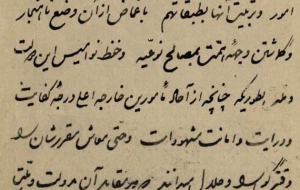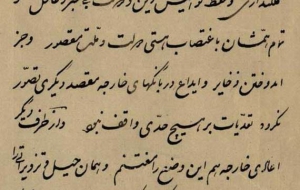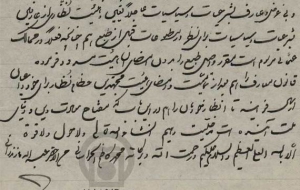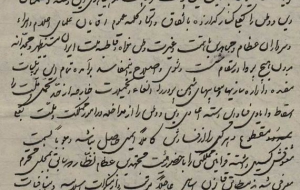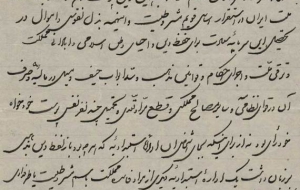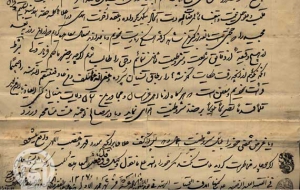Constitutional movement is one of Iran's important political developments which many historians find its roots in the political and social structure of that period. With all its weaknesses, Constitutionalist movement had as its subsequent a series of movements as a result of which people entered the political arena and fought against domestic tyranny and foreign imperialism. And some issues like freedom, law and public participation in determining their fate were formed in the minds of individuals.
Lexical meaning of Mashruteh (Constitutional) is that such government is bound to conditions and the ruling power's authority is limited in a way to prevent concentration of power in the hands of one person or group, and the protection of the rights of individuals and groups is essential in this system.
In the study of Constitutionalist movement, the following factors should be cited first: the despotism of kings and their incompetence, grant of concessions to foreign countries and their economic dominance over Iran; the Belgian monsieur Nause's action in increasing domestic goods' tax and finally protest against governor of Tehran, Allaoddowleh's action in bastinadoing some Tehran merchants for the rise in sugar prices due to Russ o Japan war. All these factors went hand in hand to pave the ground for the Constitutional Revolution. As an important step, Ulama, merchants and shopkeepers conducted a sit-in and immigration against the government,.
Seyyed Abdollah Behbahani, Mohammad Tabatabai, and Sheikh Morteza Ashtiani were among the Ulama who staged a sit in at the courtyard of holy shrine of Abdolazim who ,in their attempt to establish justice house, decided to embark on minor immigration. Upon their return to Tehran and non-realization of their wishes, and Einoddowleh's indifference to their goals, they started their major migration. Due to association of people with Ulama, their firm leadership and Najaf Ulama's announcing their support of constitutionalists, eventually, Mozaffaraddin Shah was forced to sign the Constitutional order in the 5th August 1906, and some ulama, gentries, and shopkeepers were elected to represent in the parliament and to compose the constitution.
One of the four attached documents is related to seeking religious decree from Seyyed Reihanollah Moussavi, and his decree for the necessity of forming National Consultative Assembly. The other documents indicate that people favored constitutional movement and the oath taken by a group of inhabitants of Khorassan in solidarity with the Iranian constitutionalists.
The letters of Ayatollah Mohammad Kazem Khorasani and Abdollah Mazandarani in support of constitutionalism, presenting a bill concerning the Constitutional objectives and the need for monitoring the press by a group of individuals comprising religious and political men are attached. Text of the Constitutional decree, as one of the important documents of this period of history is also attached.
https://iichs.ir/vdci.zapct1aqwli2t.html
iichs.ir/vdci.zapct1aqwli2t.html
